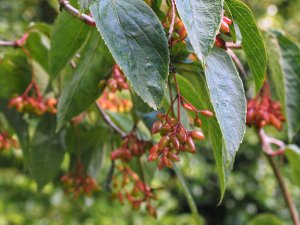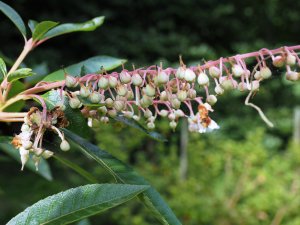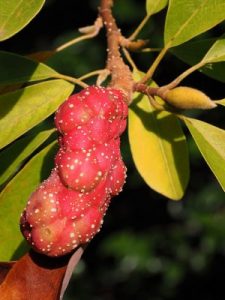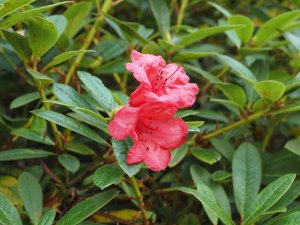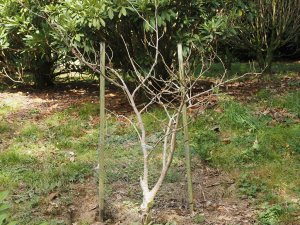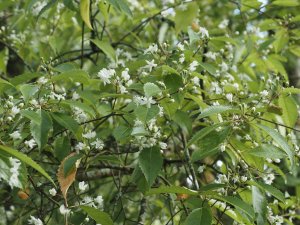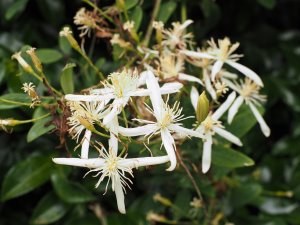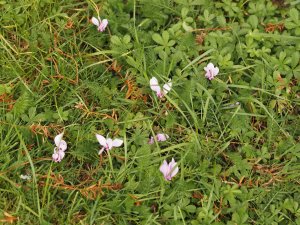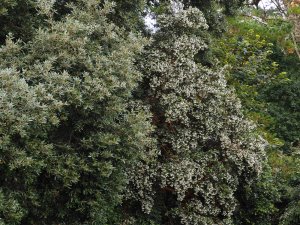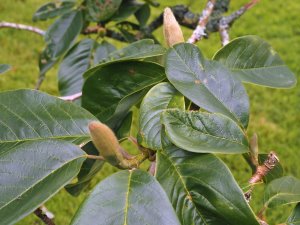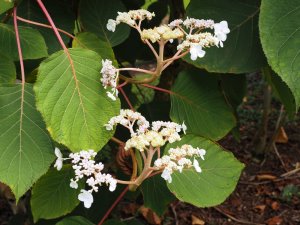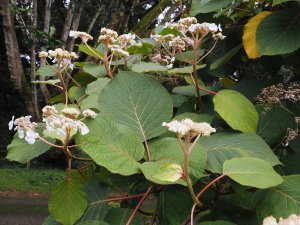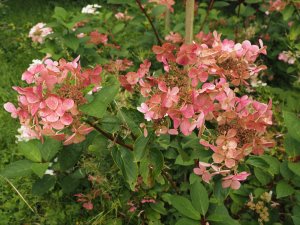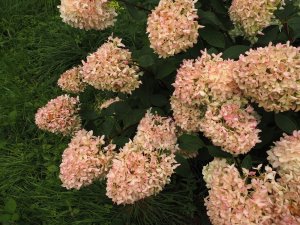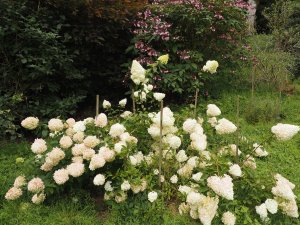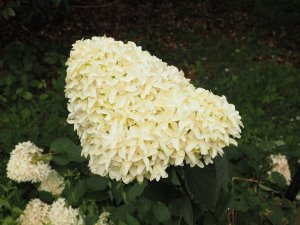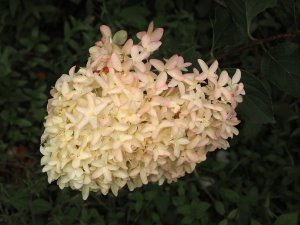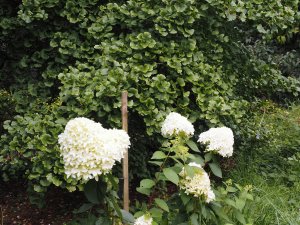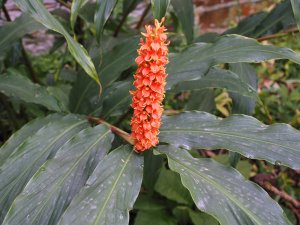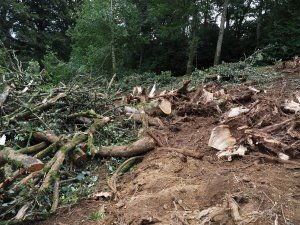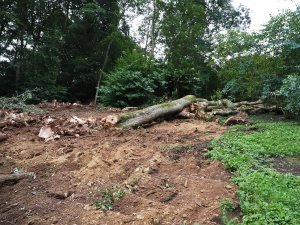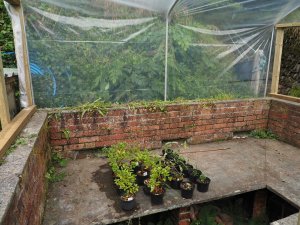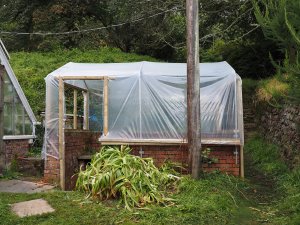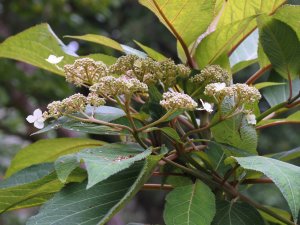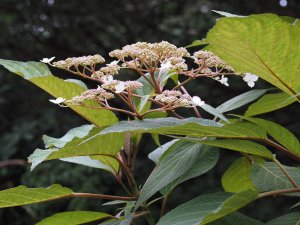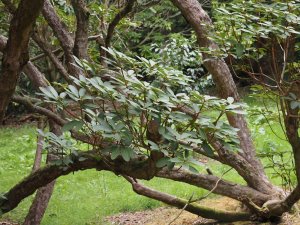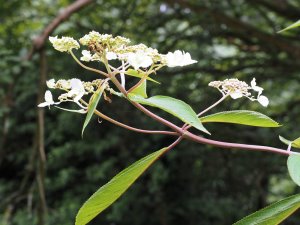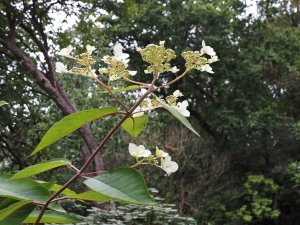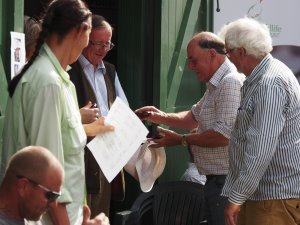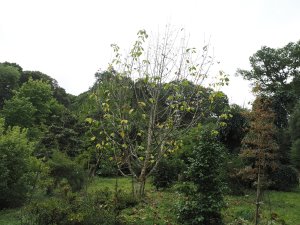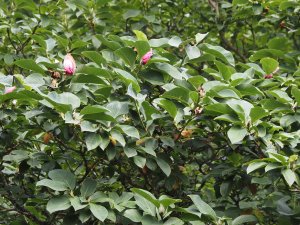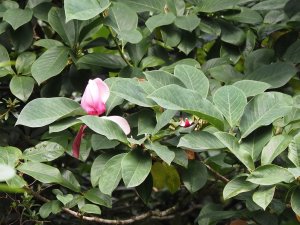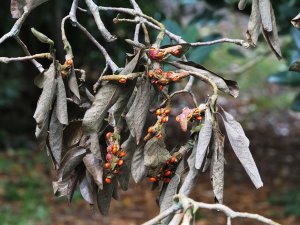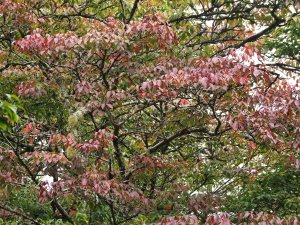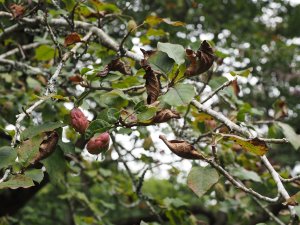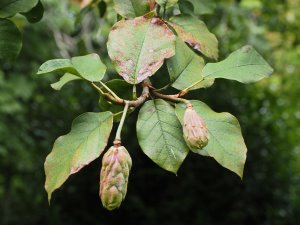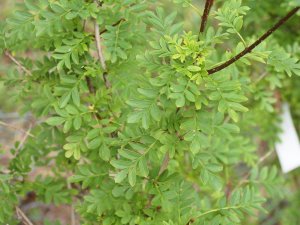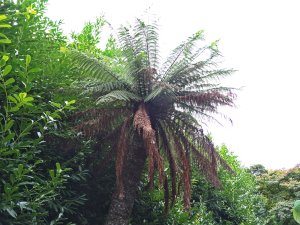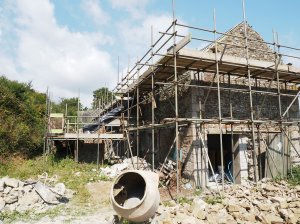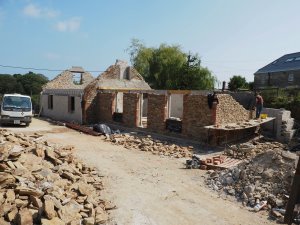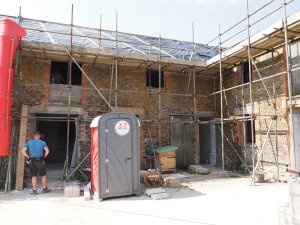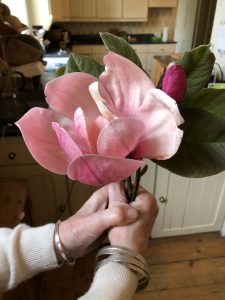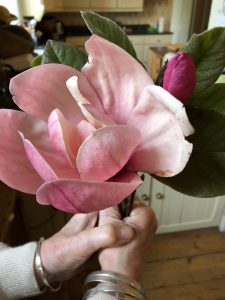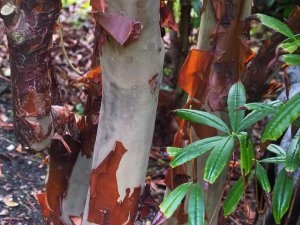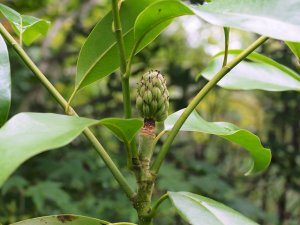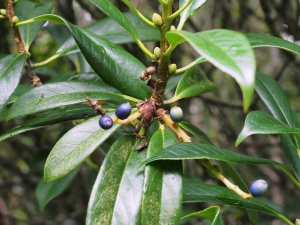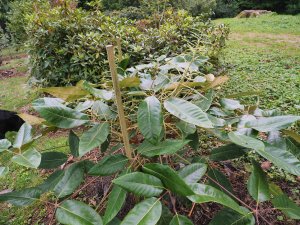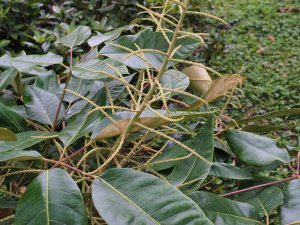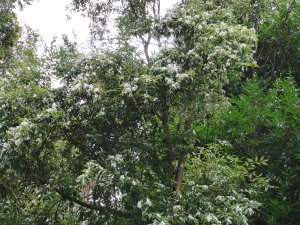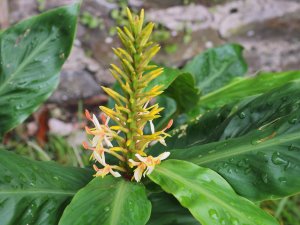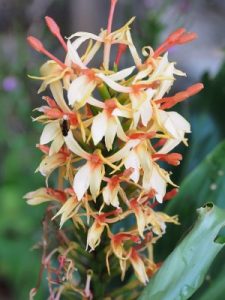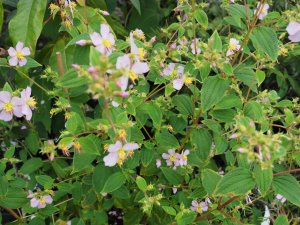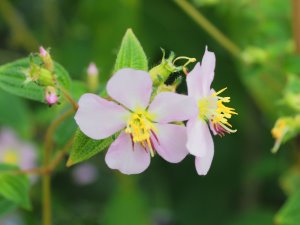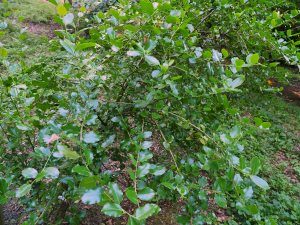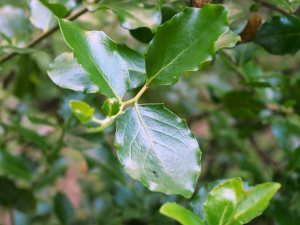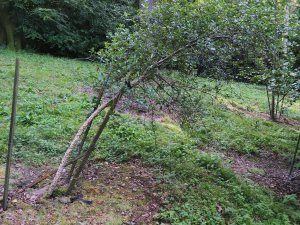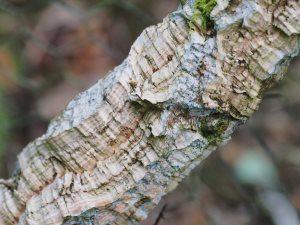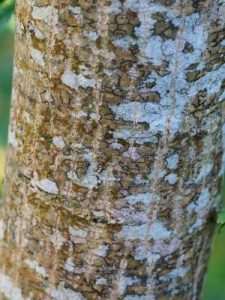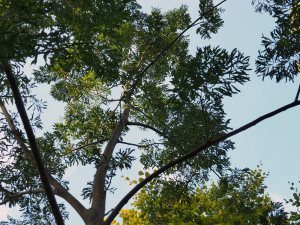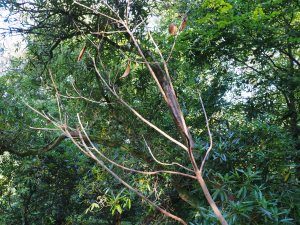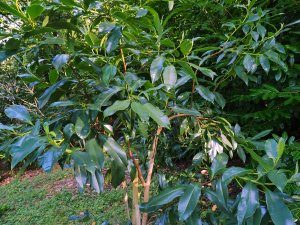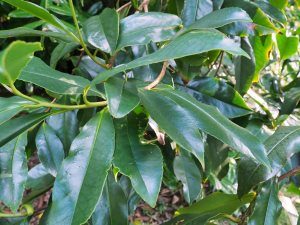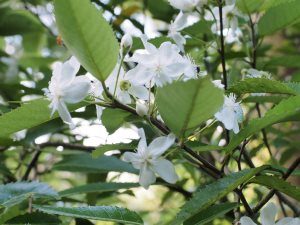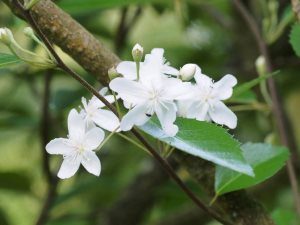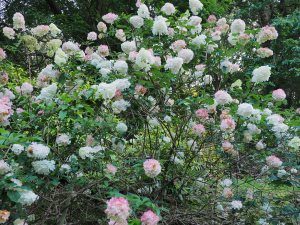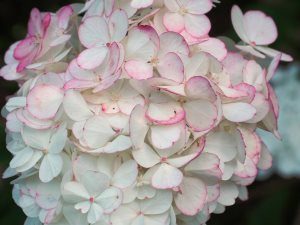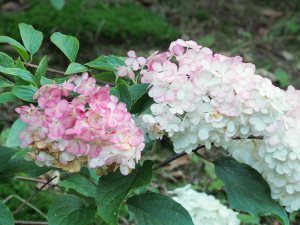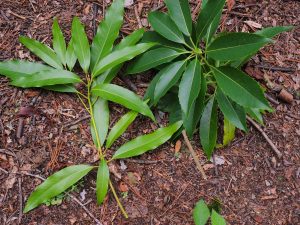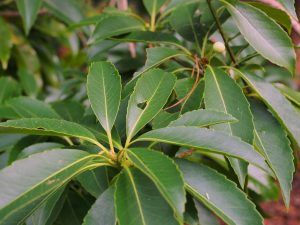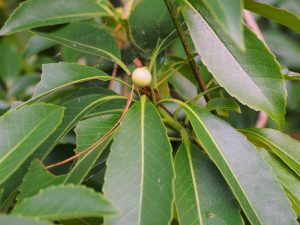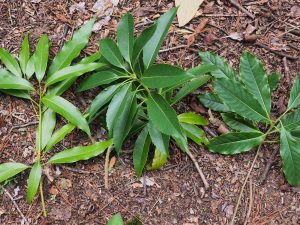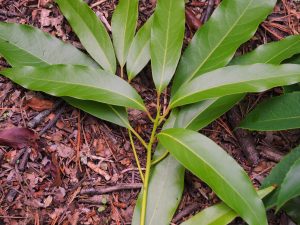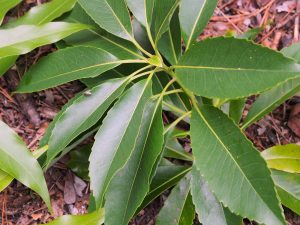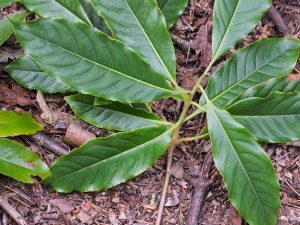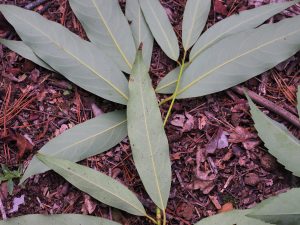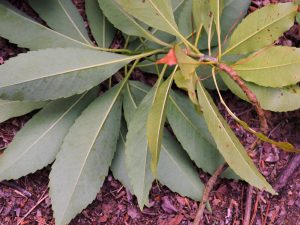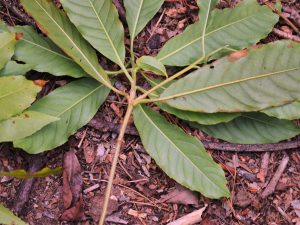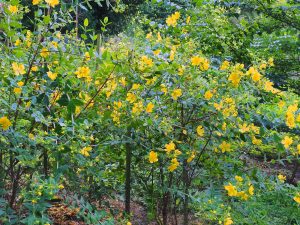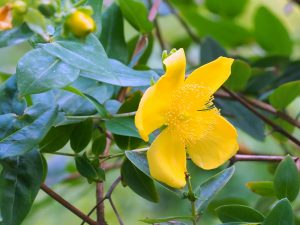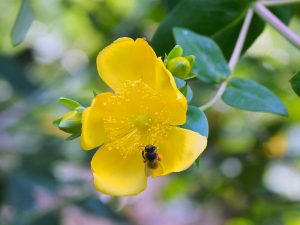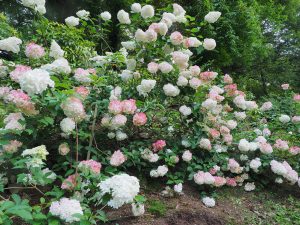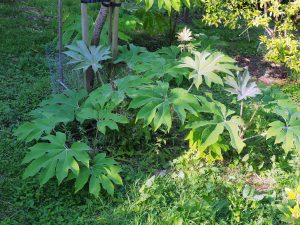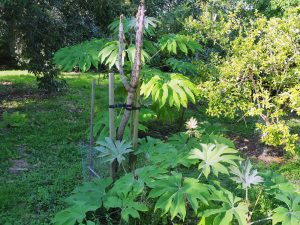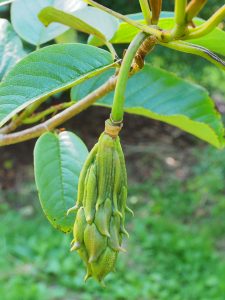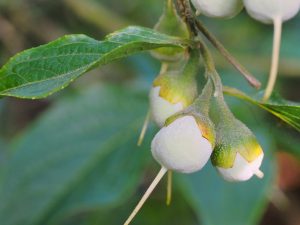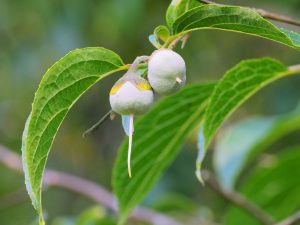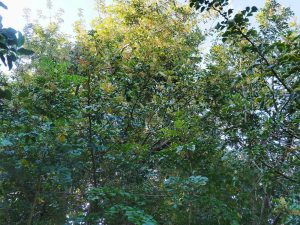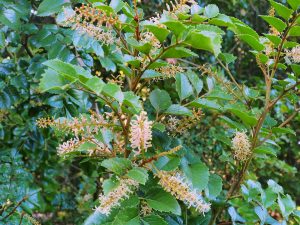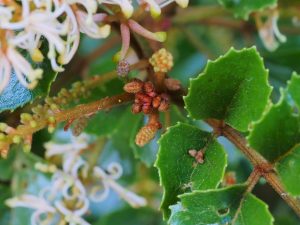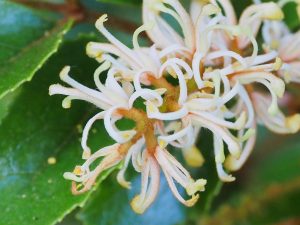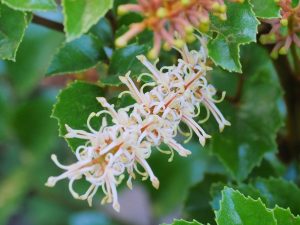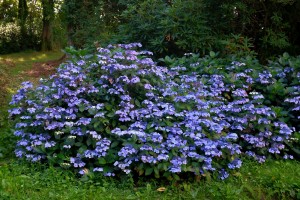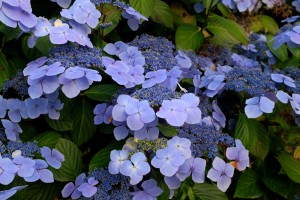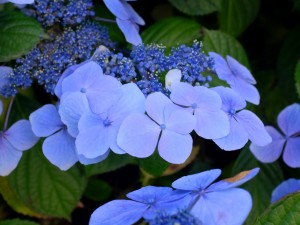2025 – CHW
At last some modest drizzle.
Ilex paraguariensis is deciduous but making good headway.
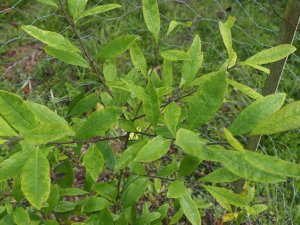
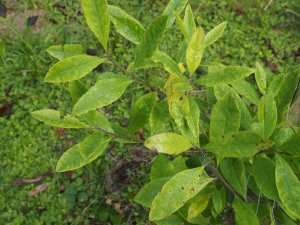
Last flowers on Clematis uncinata.
Hedychium densiflorum ‘Assam Orange’ out a bit later than the other gingers this year.
Prize giving at the annual GWCT Clay Shoot in the back yard.
2021 – CHW
Work is coming on well with the conversion of the three barns at Trevarrick which I have not seen for six or seven weeks.
A trip around the garden with Andrew Leslie from Ethy. He kindly brings a plant of his newly registered Magnolia ‘Martha Joan Leslie’ (Magnolia ‘Rose Marie’ x Magnolia ‘Blushing Bride’).
Quillaja saponaria (soap bark tree) is now 8-10ft tall but rather floppy in growth in the Rookery. Not the right place for it at all. Far too much shade for this Chilean rarity which is supposed to flower in April. I do not ever remember seeing it in flower in the nursery. Supposedly tender but well sheltered here.
A few days ago I suddenly saw what I thought was a Persea japonica tree flowering away as a Schima. On closer inspection this 15ft tree is labelled as P. japonica (twice) which is clearly incorrect.Schima species are notoriously difficult to identify and name properly even when in flower.To confuse matters the planting records show for this area a 1998 planting of Schima liukuiensis from Chris Chester at Rosemoor and given to us in 1997. There is also a record of a 2009 planting of Schima wallichii about where the plant is labelled P. japonica.On the left is a twig from the real and true Persea japonica and one from the schima (labelled P. japonica) on the right.
The problem is that the Schima (probably) khasiana has been in place since at least 1998 and the schima on the planting plan as wallichii is much younger and probably dates from 2009.
Is it possible that the incorrectly named Persea japonica is in fact Schima liukuiensis? The only person who might enjoy this complex and dull subject (apart from me) is Tom Hudson. I thought Schima liukuiensis was not in any reference book that I have but, in the small print, I see it is now called Schima superba although the picture in ‘New Trees’ does not really match our plant.
The next step is to assemble all our schima in flower and photograph them. In theory we have S. khasiana, S. wallichii and S. argentea or that is what they were planted as anyway.
2017 – CHW
A trip to examine what is setting seed this year but I get distracted!
Hypericum lancasteri has grown massively since last year and is full of flower with more to come. We put in three plants together and there is already quite a clump.
It has got to be a good summer when you can find a stick insect this size in the nursery! Huge! I wonder what stick insects eat? Updated by Julie at Forgecom – stick insects love privet, also rose and hazel leaves.2015 – CHW
Why is Hydrangea ‘Blue Wave’ at its absolute best when all the other hydrangea clumps on the drive are starting to fade in colour or have gone over altogether?
1992 – FJW
All corn in – poor harvest. Peas west, then Barley – wheat average.
1990 – FJW
All corn in – good yield but prices on low side. Caerhays not as badly hit by dry summer as some areas close to sea fog.
1967 – FJW
Terrace not cut for year – Camellia with one flower in the Werrens.
1966 – FJW
All corn in and only one field to bale – marvellous yield.
1916 – JCW
Just as in 1914 for flower, several mountain rhodo’s show flowers.





